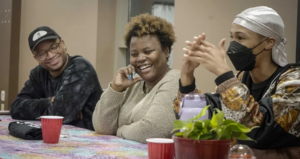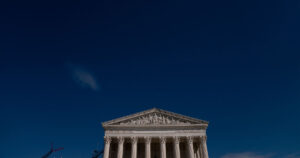Long before Dionne Sims opened Black Garnet Books on University Avenue in St. Paul, she dreamed of a bookstore that would reflect her identity.
“I think personally it’s important to me because I never had anything like this growing up,” Sims said. “It was a struggle to find children’s books where the characters looked like me but it wasn’t just a historic retelling of Ruby Bridges. There weren’t little girls who looked like me that were superheroes or who were going on adventures.”
Her store’s mission is to “address racial inequality within the publishing and literary industries, both nationally and within the state of Minnesota. In an effort to do so, we’ve curated our shelves to focus on literature by authors and illustrators of color, ensuring that any purchase made at our store directly supports the continued telling of our stories.”
When Sims and I talked recently, I told her that I enjoy visiting her store with my daughters, who love to explore a place where their stories are normalized in print.
Black Garnet Books is a powerful beacon at a time when the effort to erase Black, Indigenous, people of color, and LGBTQ history through book-banning ventures is strong. From Toni Morrison to Maya Angelou to Richard Wright to James Baldwin and others, classic and current works written by Black authors have been challenged by politicians, school board members, school officials and others around the country in recent years.
But that’s happening right now in Minnesota, too.
A group of parents in Bloomington recently launched a petition to ban a series of books, including Morrison’s “The Bluest Eye.” There are complex scenes in that book that address sexual abuse in the life of the main character, Pecola, and her complicated upbringing after the Great Depression.
At one point in the book — Have any of these people actually read it? — Claudia, a child who narrates parts of the book and witnesses Pecola’s trauma, expresses her resentment for those she expects to care for her and lead her.
“Adults do not talk to us — they give us directions,” she says in the book. “They issue orders without providing information.”
These book-banning efforts continue to strip children of crucial information under the guise of care and concern for their futures. But Morrison’s tale discusses the challenges faced by a young person in her historically marginalized community. Its content presents a threat to the imagined reality of individuals who want their children to avoid the truth about a country with blood in its soil and a vast history of discrimination and racism.
While it’s fair to ensure our schools teach age-appropriate content to students, I don’t believe any of this is related to that. Yes, many of these book-banning efforts cite sexually explicit content, but they also discuss fears around critical race theory.
Nonsense. I’ll translate the gist of these movements for anyone who doesn’t want to read the fine print: Stop exposing white kids to diverse content that conveys the human experience as something other than white, heterosexual and religious.
The possibility of empathy seems to scare them more than anything. The book-ban folks are preventing their children from learning more about one another — and also about themselves.
“Not allowing a child who believes they may be queer to read queer books is not going to stop them from being queer,” Sims said. “It’s just going to prolong the sense of hurt or confusion that they may be feeling.
“It’s one of those things where these folks think in their heads — in the best-case scenario, giving these people the benefit of the doubt — they genuinely think they’re helping or protecting children from some sort of confusion or difficulty in life that comes from an oppressed identity. In reality, all they’re doing is forcing children to see parts of themselves as inappropriate.”
This would all be so laughable if it weren’t so detrimental. While I understand that traumatic experiences conveyed in books can be difficult to digest, the stories of marginalized communities are often layered and complex.
America hasn’t been a theme park for everybody. Children should know that. And they should also see the heroes and leaders stitched into the pages of the books these folks want to ban.
That’s why I’m so glad Sims is here. She continues to work with local schools and organizations to ensure that young people have access to stories that she did not see when she was growing up.
“I just know that, historically, having these spaces, where they’re run by people of color, is just important for neighborhood buy-in, for people to feel like they have a claim to spaces in the neighborhood,” Sims said.
“They know that they can go in there and feel comfortable no matter what. And it’s important that people know that you can fill a bookstore with books that reflect our lived experiences. We don’t have to be relegated to just a table in the corner or one month out of the year. It can be all year-round, and it should be all year-round.
“Our stories are at the forefront.”
Myron Medcalf is a local columnist for Star Tribune and recipient of the 2022 Society of Professional Journalists Sigma Delta Chi Award for general column writing.




